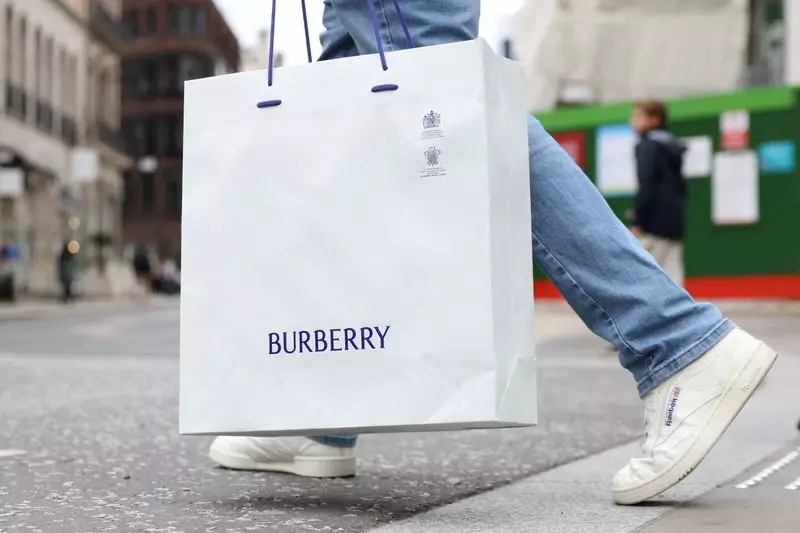Burberry, the renowned British luxury fashion house, has recently showcased an unexpected resilience in its quarterly comparable store sales, reporting a mere 4% decline. This figure is significantly better than the anticipated 12% downturn expected by industry analysts. The surprising results, sparked by a favorable holiday season in the United States, signal a potential turning point for the luxury brand. The overall sentiment in the luxury market appears to be on the mend, as evidenced by a healthy surge in Burberry’s share price following the announcement.
Joshua Schulman, the newly appointed CEO of Burberry, who took the reins of the company six months ago, has underscored the success of the brand’s recent advertising campaigns. These initiatives, which prominently featured Burberry’s iconic trench coats and cashmere scarves, aimed to reestablish an emotional connection with diverse consumer demographics, distancing the brand from an overemphasis on accessible luxury products like bags and shoes. Schulman asserts that the festive campaign resonated genuinely with consumers, stating, “We are extremely pleased with the results.” This adaptive strategy seems to be bearing fruit as December marked the first month in over two years to see new customer growth alongside heightened brand desirability.
Burberry’s approach under Schulman is clear: a back-to-basics focus on their most recognizable products. Reports of impressive sales figures for cashmere scarves, priced between £420 and £990, and outerwear indicate that consumers are responding positively to this pivot. The brand’s ability to effectively stretch its luxury offerings, including a stunning $13,900 women’s trench coat, reflects a noteworthy recovery in luxury demand, particularly in high-profile markets such as the United States.
Several industry analysts have taken note of these developments. Notably, RBC’s market commentary emphasizing the results as an “early step in the right direction” suggests growing confidence among investors. Additionally, positive signals from other luxury brands, including Richemont and Brunello Cucinelli, hint at a broader recovery in the luxury sector, allowing brands like Burberry to regain footing in a competitive marketplace.
Burberry’s sales improvements are not limited to the U.S. market. Schulman highlighted New York’s performance following the relaunch of a refurbished store on 57th Street, which has contributed to a healthy 4% increase in sales across the Americas. Meanwhile, the Asia-Pacific region reported a significant rebound in sales, recovering from a severe 28% decline in the previous quarter to a more manageable 9% decrease. In contrast, the Europe, Middle East, India, and Africa (EMEIA) market exhibited a decline reduced from 10% to just 2%, hinting at a stabilization in consumer spending across these regions.
These trends align with Burberry’s approach to maintaining inventory levels. CFO Kate Ferry’s acknowledgment that markdowns implemented in December contributed to the improved sales while full-price transactions boosted confidence in the recovering demand underscores the brand’s strategic flexibility in navigating consumer preferences.
This new level of performance from Burberry has led to optimistic projections regarding the upcoming financial year. The company anticipates that it may offset the adjusted operating loss of £41 million reported in the first half of the fiscal year. The forthcoming presentation of Burberry’s Autumn/Winter 2025 collection at London Fashion Week promises to be another pivotal moment in the brand’s resurgence, further setting the stage for renewed visibility and presence in the luxury fashion scene.
As Burberry continues to redefine itself through a sharpend focus on heritage products and a commitment to meaningful consumer engagement, the signs point toward a propitious future. If the momentum of this turnaround is maintained, Burberry may well reclaim its status as a leader in the luxury fashion industry, marking a significant shift in both market confidence and consumer sentiment.

